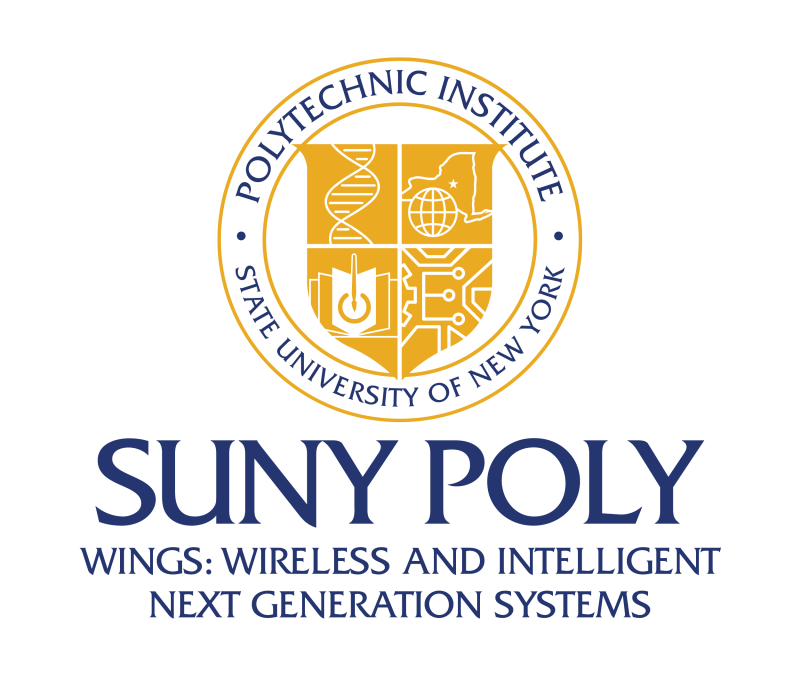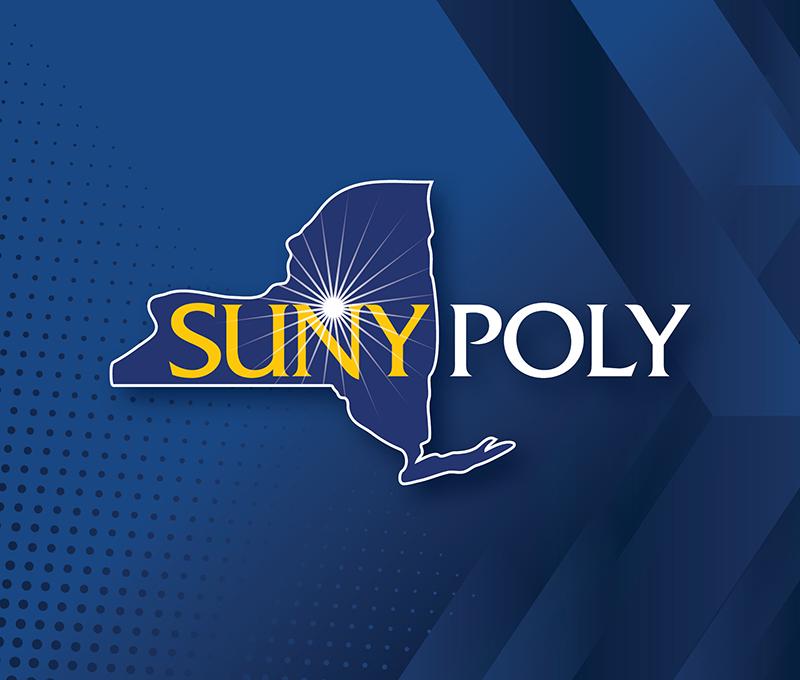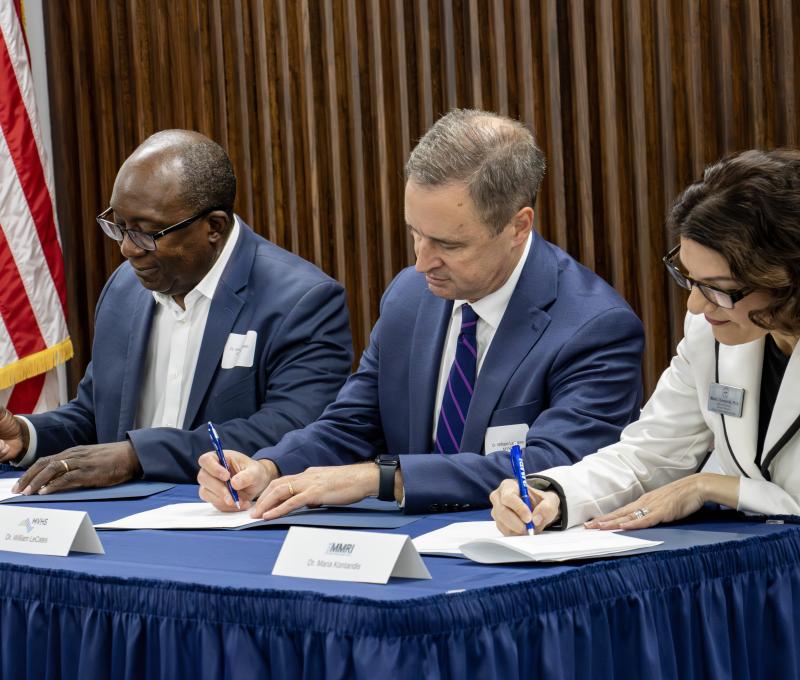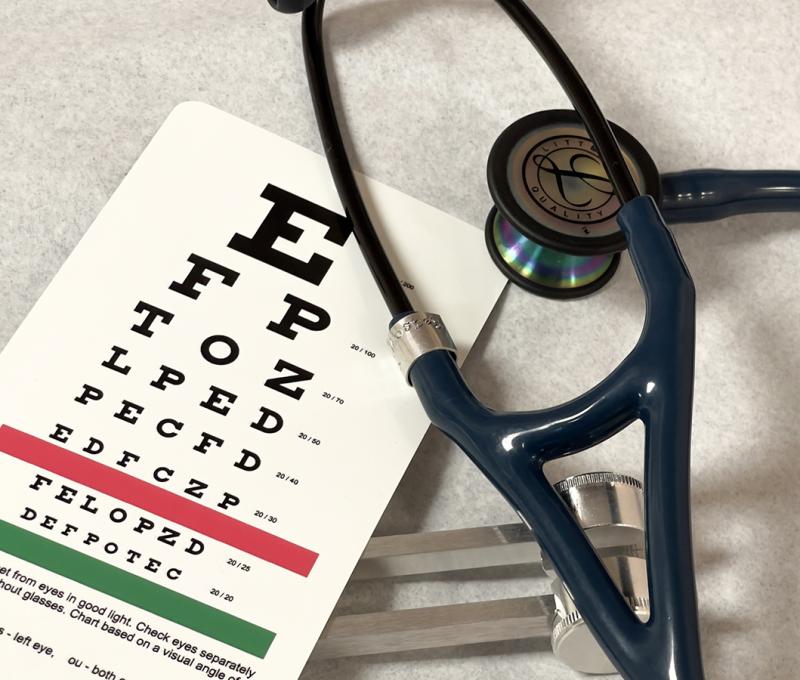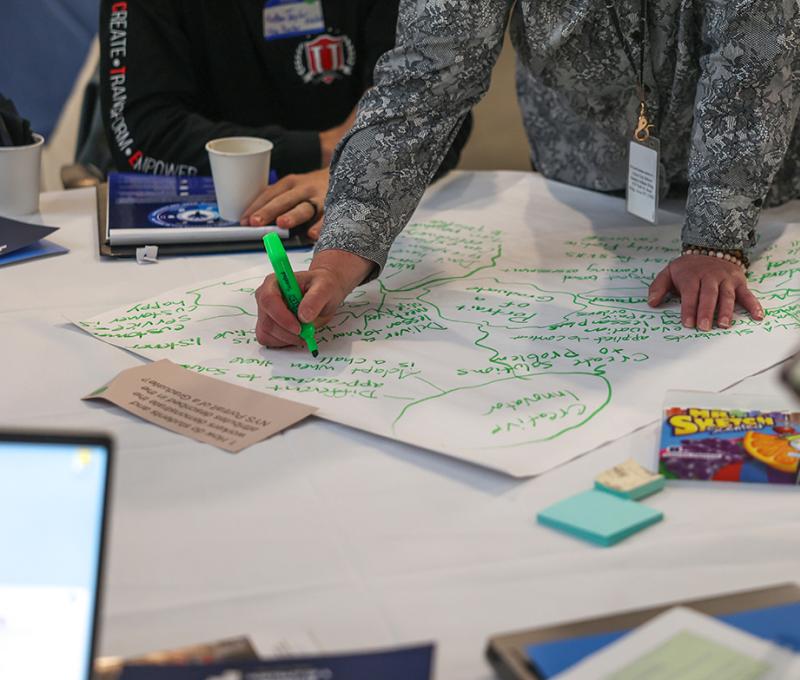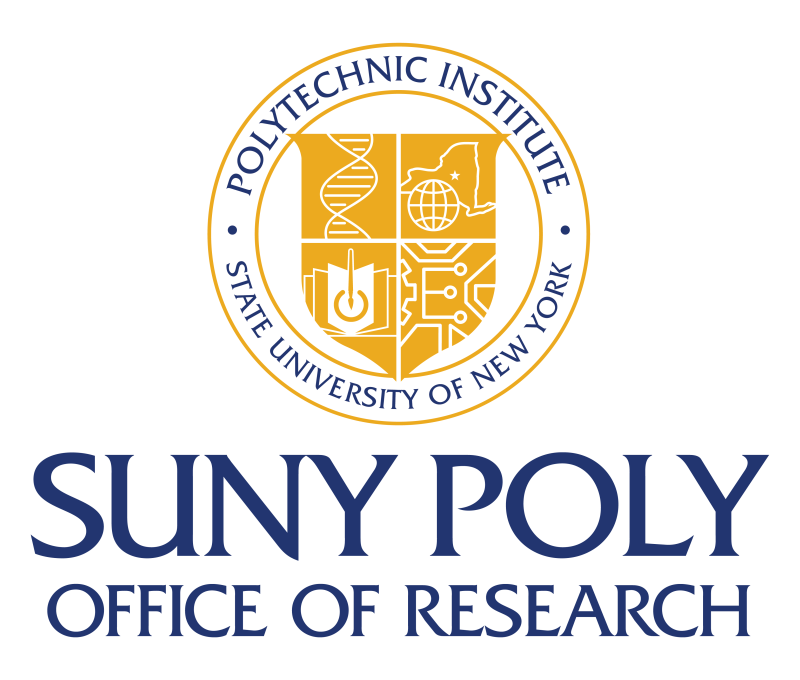News Release: SUNY Poly Professors Awarded $1.57M for Three Separate Cutting-Edge Nanobioscience-Focused Research Efforts

For Release: Immediate – October 16, 2018
Contact: Steve Ference, Director of University Communications | (518) 956-7319 | sference@sunypoly.edu
Dr. Janet Paluh receives $970,000 from New York State Health Department to address spinal cord injury with nanotechnology; in addition to $162,000 to identify biomarkers and pathways for better prognosis and therapy of traumatic brain injuries
Dr. Michael Fasullo receives $446,000 from National Institutes of Health to determine which genes suppress carcinogen-associated DNA mutations in order to decrease colon cancer risk
ALBANY, NY – SUNY Polytechnic Institute (SUNY Poly) announced today that two professors have been selected to receive more than $1.57 million in federal and state funding through three separate nanobioscience-centered grants:
- Associate Professor of Nanobioscience Dr. Janet Paluh has been awarded more than $970,000 from the New York State Department of Health—Spinal Cord Injury Research Board (NYSCIRB) for collaborative research using nanotechnology and human stem cell-derived neural cell therapies to create an effective treatment platform for spinal cord injuries in patients;
- In addition, Dr. Paluh received a $162,000 sub-award from the New York State Department of Health—Stem cell science NYSTEM Innovative, Developmental, or Exploratory Activities (IDEA) program for collaborative research with the University at Albany to identify new types of injury and repair biomarkers based on cell communication to benefit prognosis or diagnosis of traumatic brain injuries. More than 2.8 million Americans annually and more than 400 people daily in New York sustain a brain injury; and
- Associate Professor of Nanobioscience Dr. Michael Fasullo was awarded $446,000 by the National Institutes of Health National Institute of Environmental Health Sciences (NIH-NIEHS) to investigate with a number of partners how genetics can increase the risk of diet-associated colon cancer. This effort could lead to the creation of improved diagnostics to help prevent colon cancer in the first place.
“On behalf of SUNY Poly, I am thrilled to congratulate Professors Janet Paluh and Michael Fasullo on receiving these grants that can help drive research to improve disease diagnosis and treatment for spinal cord and traumatic brain injuries, as well as colon cancer, all of which are areas of critical health concerns for many in New York State and around the world,” said SUNY Poly Interim President Dr. Grace Wang. “This latest round of awards from the New York State Department of Health and NIH highlights the continuing work of SUNY Poly’s expert faculty who are able to use SUNY Poly’s world-class capabilities to engage in important, cutting-edge research that also provides invaluable hands-on educational opportunities for our students.”
Each of the three research projects will support lab-based student learning. In particular, an M.D./Ph.D. degree candidate, who is a student in the SUNY Poly-SUNY Downstate Nanomedicine program, will work under the mentorship of Dr. Paluh on the spinal cord injury-focused research, generating the required nanoplatforms, combined with therapeutic neural cells that include neural stem cells, spinal motor neurons, and oligodendrocytes. A number of other graduate and undergraduate students will help functionally characterize stem cell-derived neural cells as part of both NYSDOH awards. Dr. Fasullo’s grant will lead to hands-on training for both undergraduate and graduate students at SUNY Poly, a number of whom have already participated in identifying genes that confer resistance to colon-associated carcinogens, a key idea for understanding the ways in which genes can help the body avoid cancer.
“The announcement of this latest batch of grants for SUNY Poly’s faculty is excellent recognition of the kind of meaningful research that a number of our students are able to take part in to gain first-hand knowledge of this growing area of investigation, and I am proud to congratulate Drs. Paluh and Fasullo on these significant awards,” said SUNY Poly Interim Provost Dr. Steven Schneider.
“I am thrilled to congratulate both Dr. Paluh and Dr. Fasullo, whose research can have a meaningful impact on research into the treatment of treat spinal cord injuries, traumatic brain injuries, and colon cancer, which affect millions of people. These nanobioscience-based research awards support the important health-focused work that takes place at SUNY Poly each day and offers our students the unique experience to learn cutting-edge skills right in our labs,” said SUNY Poly Interim Dean of the College of Nanoscale Sciences; Empire Innovation Professor of Nanoscale Science; and Executive Director, Center for Nanoscale Metrology Dr. Alain Diebold.
Dr. Paluh Research Grant—Healing the Contusion-Injured Spinal Cord Microenvironment with Nanotechnology and Stem Cell-Assisted Modulation
The NYSCIRB award supports research into the combined use of stem cell-derived neural cell therapies and nanotechnology to create a predictable and effective therapeutic cell platform for treating spinal cord injury in patients. Greater than 90% of spinal cord injury patients can expect to suffer long-term motor dysfunction after injury, with 78% experiencing moderate to severe pain. Studies point to stem cell regenerative therapeutics as currently offering the best strategies for restoring spinal cord motor function. By combining the advanced technologies of human stem cells and nanotechnology, synergies are created that can help overcome previous challenges with stem cell-based therapies alone. The overall goal is to help standardize solutions for delivering therapeutic cells and coaxing the injury microenvironment to accept these therapies. The development of a uniform and reproducible platform helps to unify efforts worldwide in order to drive rapid advances in spinal cord injury treatment from bench to human clinical trials and toward improved patient outcomes.
Dr. Paluh’s spinal cord injury research project brings together a world-renowned team of six faculty experts from universities that includes SUNY Poly; Houston Methodist University’s Institute for Academic Medicine; Michigan State University; Rensselaer Polytechnic Institute; and the University at Albany.
Dr. Janet Paluh Research Grant—Optimizing Replacement Cell Therapies Through Microchip Analysis of Cooperativity
Dr. Paluh’s NYSTEM IDEA grant will enable a collaborative research approach to the pathophysiology of traumatic brain injury (TBI). The effort combines bioengineering, nanotechnology, and human stem cell biology to generate an advanced model of human TBI that will allow for the in-depth study of stem cell-derived neural cells for therapies and communication between neural cells in an injury environment. Dr. Paluh’s research team will study in a nanoplatform how multiple neural cell types co-interact to signal changes in the compressive brain injury microenvironment.
The development of a neural cell-cell interaction microchip (NCCIM) provides a unique ability to examine subpopulations of interacting cells with the goal of identifying signature biomarkers that can be linked to prognostic and therapeutic outcomes. Notably, human-induced pluripotent stem cells of minority origin, which were derived by Dr. Paluh as part of a previous NYSTEM award, will be applied to the research. These stem cell lines represent a unique and extensively characterized resource that brings expanded population diversity to biomedical research.
This research will be conducted in partnership with the lead co-principal investigator and UAlbany Assistant Professor Dr. Jun Wang, who previously developed other microchip platforms for cell communication. The NCCIM microchip platform development will be a coordinated effort of these two labs and requires optimization of the on-chip cell culture of multiple stem cell-derived neural cell types and microglia. Dr. Paluh will also work closely with a Brown University Neurotrauma and Brain Barriers expert, who will help prioritize traumatic brain injury biomarkers and signaling pathways with relevance to prognosis and therapy.
“I am excited by the NYSCIRB award and team of researchers who will help to advance biomedicine for those in New York State and elsewhere who are living with spinal cord injuries and are in need of advanced solutions to improve their quality of life,” said Dr. Paluh. “I am also thrilled to receive the NYSTEM IDEA award, which is an important mechanism for addressing bold initiatives in stem cell research therapies and lays the foundation for high-impact follow-up proposals. In particular, this grant will expand our knowledge of neural stem cells used in therapies and apply stem cell-generated neural cells and microglia in a microchip as a tool to understand TBI at the level of changes to cell communication in order to guide treatments and cell-based therapies. A modified NCCIM platform is also expected to be widely applicable to study cell communication during neurodegeneration and neuroplasticity changes that occur in the central nervous system as a result of normal development, aging, disease, or drug addiction. Students working on these awards will be able to play a direct role in both of these critical research efforts that strive to drive translational outcomes that will improve the quality of human life.”
“There are still a lot of unknowns in stem cell therapy and brain injury research, and this project using NCCIM technology will allow us to dig them out,” said Dr. Jun Wang. “The NYSTEM grant enables us to direct the production of specific brain cells through stem cell differentiation, improve therapy efficiency of traumatic brain injury treatment, and generate a new disease model and drug screening approach—all of which could also prove helpful in diagnosing and treating Alzheimer's disease.”
Dr. Michael Fasullo Research Grant—Genomic Profiling of Yeast Resistance to Heterocyclic Aromatic Amine
Dr. Fasullo’s research aims to identify the signatures that result from gene susceptibility and mutations caused by colon-associated carcinogens, such as charred meats, which can lead to an increase in the chances of colon cancer. This research will help determine which resistance genes suppress colon carcinogen-associated DNA mutation, potentially leading to better diagnosis or therapies for colon cancer. By using high-throughput DNA sequencing methods to identify mutation signatures and leveraging SUNY Poly’s advanced nanobioscience laboratories and resources, the goal is to enable new diagnostic tools for individuals at risk for colon cancer due to family background, so that clinical intervention may be pursued earlier to diminish cancer risk.
“By better understanding how diet and genetics influence cancer risk, I am proud that this research can help lead to the establishment of more effective cancer prevention strategies to reduce the total number of deaths, especially because advanced stage cancer treatments often have limited success,” said Dr. Fasullo. “I am grateful to the NIH-NIEHS for this award which will also help students gain important skills so that they can pursue this critical area of investigation, and I am thankful for the many collaborators on this project, including recent graduates, the SUNY Poly nanobioscience faculty who have supported this effort, and staff who have handled large data sets with a number of computer applications.”
Dr. Fasullo and his team are partnering with the New York State Department of Health, Wadsworth Center, which will assist in characterizing the signs of mutation that can result from heterocyclic aromatic amines, the potentially cancer-causing chemical compounds produced by heating meat. In addition, Dr. Fasullo is partnering with the University at Albany’s RNA Institute, which will assist in detecting the segments of DNA that connect to a carcinogenic chemical, called “DNA adducts”; their interaction can lead to the proliferation of cancer cells.
News of these latest grants follows recent announcements by SUNY Poly. Associate Professor of Nanoengineering Dr. Woongje Sung was selected to receive $2,078,000 in total federal funding from the U.S. Army Research Laboratory (ARL) for advancing the “MUSiC,” or the Manufacturing of Ultra-high-voltage Silicon Carbide devices for more robust power electronics chips with a range of military and commercial applications, with hands-on educational opportunities for a number of SUNY Poly students. Additionally, Professor of Nanobioscience Dr. Nate Cady was recently awarded $500,000 in funding from the National Science Foundation to develop advanced computing systems based on a novel approach to the creation of non-volatile memory architecture.
####################
About SUNY Polytechnic Institute (SUNY Poly)
SUNY Poly is New York’s globally recognized, high-tech educational ecosystem. SUNY Poly offers undergraduate and graduate degrees in the emerging disciplines of nanoscience and nanoengineering, as well as cutting-edge nanobioscience and nanoeconomics programs at its Albany campus, and undergraduate and graduate degrees in technology, including engineering, cybersecurity, computer science, and the engineering technologies; professional studies, including business, communication, and nursing; and arts and sciences, including natural sciences, mathematics, humanities, and social sciences at its Utica/Rome campus; thriving athletic, recreational, and cultural programs, events, and activities complement the campus experience. As the world’s most advanced, university-driven research enterprise, SUNY Poly boasts billions of dollars in high-tech investments and hundreds of corporate partners since its inception. For information visit www.sunypoly.edu.
The opinions, results, findings and/or interpretations of data contained therein are the responsibility of the Contractor and do not necessarily represent the opinions, interpretations or policy of the State or if funded with Federal funds, the applicable Federal funding agency.
Research reported in this publication was supported by the National Institute Of Environmental Health Sciences of the National Institutes of Health under Award Number R15ES023685. The content is solely the responsibility of the authors and does not necessarily represent the official views of the National Institutes of Health.

